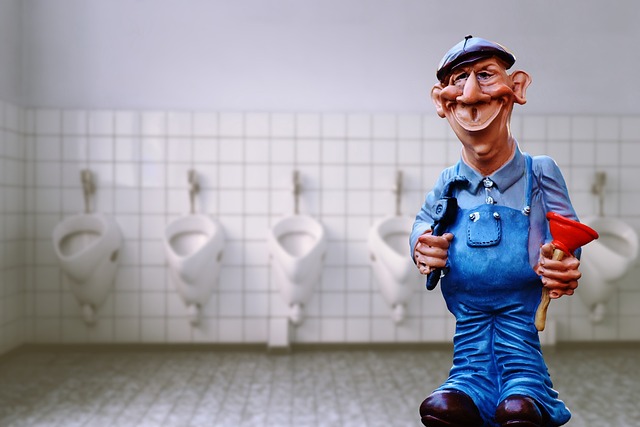Trenchless technology has transformed plumbing by offering efficient, less disruptive sewer line repairs, especially in urban areas. Using specialized equipment like cameras and robots, plumbers can navigate existing pipes, identify issues, and make repairs with minimal intrusion. This method reduces repair times, labor costs, and job site disruptions, providing precise, targeted fixes that last. Plumbers can access hard-to-reach areas and address complex issues without traditional excavation methods, benefiting both residential and commercial properties by minimizing property damage and reducing project timelines. Key equipment like high-pressure water jets and inspection cameras enhance efficiency and minimize disruptions, making trenchless technology a reliable, cost-effective, and environmentally friendly alternative for plumbers.
“Discover how plumbers are revolutionizing sewer line repairs with trenchless technology, a game-changer in the industry. This innovative approach eliminates the need for traditional digging, reducing disruptions and costs. In this comprehensive guide, we explore ‘Understanding Trenchless Technology: A Plumber’s Perspective’, highlighting its benefits and step-by-step processes. Learn about the latest plumbing equipment for effective repairs from successful case studies, offering a new era of efficient, non-invasive sewer restoration.”
- Understanding Trenchless Technology: A Plumber's Perspective
- The Benefits of Trenchless Sewer Line Repairs
- How Trenchless Methods Work: Step-by-Step Guide
- Choosing the Right Equipment for Effective Repairs
- Case Studies: Successful Trenchless Sewer Restoration Projects
Understanding Trenchless Technology: A Plumber's Perspective

Trenchless technology has transformed the way plumbers approach sewer line repairs, offering a more efficient and less disruptive solution compared to traditional excavation methods. This innovative approach allows for the repair or replacement of pipes without digging up large sections of land, which is particularly beneficial in densely populated urban areas. By using specialized equipment like cameras, robots, and pressure-driven tools, plumbers can navigate through existing pipes, identify issues, and make repairs with minimal intrusion.
From a plumber’s perspective, trenchless technology provides several advantages. It reduces the time and labor required for repairs, minimizing job site disruptions and associated costs. Moreover, it allows for more precise and targeted fixes, ensuring long-lasting results. With trenchless methods, plumbers can access hard-to-reach areas, address complex issues, and offer a higher level of service to homeowners and businesses without the usual mess and inconvenience of traditional excavation.
The Benefits of Trenchless Sewer Line Repairs

Trenchless technology has revolutionized the way plumbers approach sewer line repairs, offering numerous benefits that traditional dig-and-replace methods cannot match. One of the most significant advantages is minimal disruption to the surrounding area. With trenchless techniques, there’s no need for large excavation projects, saving time, money, and reducing environmental impact. This method allows for repairs or replacements to be made from within the pipe itself, often with small access points, ensuring little to no destruction of lawns, roads, or other infrastructure.
Furthermore, trenchless sewer line repairs are more efficient and cost-effective. By eliminating the need for extensive excavation, this technology reduces labor costs and shortens project timelines. It also improves safety by minimizing the risk to workers, as they don’t have to operate in exposed, potentially hazardous trenches. This innovative approach has made it easier for plumbers to provide quick solutions to blocked or damaged sewers, ensuring better service for homeowners and businesses alike.
How Trenchless Methods Work: Step-by-Step Guide

Trenchless technology has revolutionized the way plumbers conduct repairs, offering a more efficient and less disruptive approach to fixing sewer lines. Unlike traditional excavation methods that require extensive digging, trenchless techniques allow for non-invasive repairs, making it an attractive solution for both residential and commercial properties. Here’s a step-by-step guide on how these innovative methods work:
1. Inspection: Plumbers first use advanced camera systems and sensors to inspect the sewer line from above ground. This detailed visual assessment helps in identifying issues such as cracks, blockages, or leaks.
2. Access Points: Once the problem area is located, access points are established at both ends of the damaged section. These access points allow for the insertion of specialized equipment without the need for a large excavation.
3. Equipment Insertion: A small, flexible machine, often equipped with high-pressure water jets or cutting tools, is inserted through one of the access points. This machine can navigate around curves and tight spaces, reaching the affected area directly.
4. Repair or Replacement: Depending on the severity of the damage, the plumber uses techniques like high-pressure cleaning to remove obstructions or reline the pipe with durable materials. In some cases, a new section of pipe may be inserted to replace the damaged segment.
5. Verification and Testing: After completing the repairs, plumbers use cameras again to verify the work and ensure the sewer line is structurally sound and free from issues.
Choosing the Right Equipment for Effective Repairs

When it comes to repairing sewer lines using trenchless technology, a plumber’s choice of equipment plays a pivotal role in achieving effective outcomes. The right tools can significantly enhance efficiency and minimize disruptions to surrounding areas. Plumbers now have access to an array of advanced machines designed specifically for this purpose, each with unique capabilities. For instance, high-pressure water jets have become indispensable for clearing blockages and expanding pipe diameters without the need for extensive excavation.
Additionally, modern plumber’s rely on state-of-the-art inspection cameras that provide real-time visuals of sewer lines, allowing them to accurately assess damage or obstructions. These tools enable plumbers to make informed decisions, choose the right repair methods, and ensure long-lasting solutions. With the right equipment, a plumber can efficiently navigate complex sewer systems, address issues promptly, and restore smooth operations without the traditional messy and time-consuming trench excavation methods.
Case Studies: Successful Trenchless Sewer Restoration Projects

Trenchless technology has transformed the way plumbers approach sewer line repairs, offering a more efficient and less disruptive solution compared to traditional open-cut methods. This innovative approach has been successfully implemented in numerous case studies, showcasing its effectiveness across various projects. For instance, in an urban setting, a major challenge was presented when a section of the main sewer line became severely damaged due to age and tree root intrusion. A team of expert plumbers employed trenchless techniques, including high-pressure hydrojetting and relining, to restore the line without excavation. This project not only saved the municipality significant costs but also minimized traffic disruptions in one of the city’s busiest areas.
Another compelling case involves a residential neighborhood facing recurring sewer clogs and damage. Through trenchless technology, plumbers were able to identify the source of the problem and implement relining and sealing methods to prevent further issues. The results were remarkable, with improved flow capacity and no more significant blockages or structural failures. These real-world applications demonstrate that trenchless sewer restoration is a reliable, cost-effective, and environmentally friendly alternative for plumbers, ensuring better service quality and reduced impact on communities.
Trenchless technology has revolutionized the way plumbers approach sewer line repairs, offering a more efficient and cost-effective solution. By understanding this innovative method, plumbers can provide faster, less disruptive service while ensuring long-lasting results. This modern approach to maintenance not only benefits businesses and homeowners but also contributes to a smoother, more sustainable urban landscape. With ongoing advancements in equipment and techniques, trenchless sewer line repairs are set to become the go-to standard for plumbing professionals.
